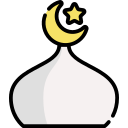
- Share to:
Princess Kadámbari (volume one of three) Cantos 1-2
No Sanskrit poet is more interesting, original, or greater than Bana. His prose poem “Princess Kadámbari” is his supreme achievement. His patron, King Harsha, ruled much of northern India from 606 to 647 CE from his capital at Kannauj.
“Princess Kadámbari,” a work of fiction set in keenly observed royal courts, has everything. A love story doubled and redoubled in rebirth, the romance was so influential that its title became the word for a novel in some modern Indian languages.
In free form verse, the experimental poem embodies enormous originality. Animals, flowers and mythology, as well as humans are presented in sympathetic detail. The complex coherent structure will culminate in a breathtaking conclusion.
The two love affairs that dominate the poem have not yet begun in this first volume, where we hear of rituals to obtain a son, and the upbringing of a prince. Altogether the reader is given perhaps the fullest presentation of classical India available in a single work.
The chief narrator, here reborn as a parrot, thus remembers the assault of a wild hunter on his home in the hollow of a tree:
“The brute pulled out my father
who was repeatedly striking him with his beak and crying out,
and squeezed the life out of him.
But me, wrapped in the fold of my father's wing,
because I was very small, and had shrunk my body in terror,
and because I had the rest of my life to live,
somehow he did not notice.
And he dropped him, headfirst, neck broken, dead,
to the ground.
As for me, my neck wedged between his feet, hidden in his lap,
I fell down with him.”
สถานภาพ
No copy data
Detail Information
- ชื่อชุด
-
Clay Sanskrit library, 51.
- เลขหมู่
-
-
- ผู้จัดทำ
- New York University Press : New York University Press., 2009
- ลักษณะวัสดุ
-
558 pp.
- ภาษา
-
- ISBN/ISSN
-
9780814740804
- หมวดหมู่
-
NONE
- Content Type
-
-
- Media Type
-
-
- Carrier Type
-
-
- ครั้งที่จัดทำ
-
-
- หัวเรื่อง
-
-
- ชื่อเรื่องเพิ่ม
-
-
- Statement of Responsibility
-
-
 Computer science, information & general works
Computer science, information & general works
 Philosophy & psychology
Philosophy & psychology
 Religion
Religion
 Social sciences
Social sciences
 Language
Language
 Pure Science
Pure Science
 Applied sciences
Applied sciences
 Arts & recreation
Arts & recreation
 Literature
Literature
 History & geography
History & geography